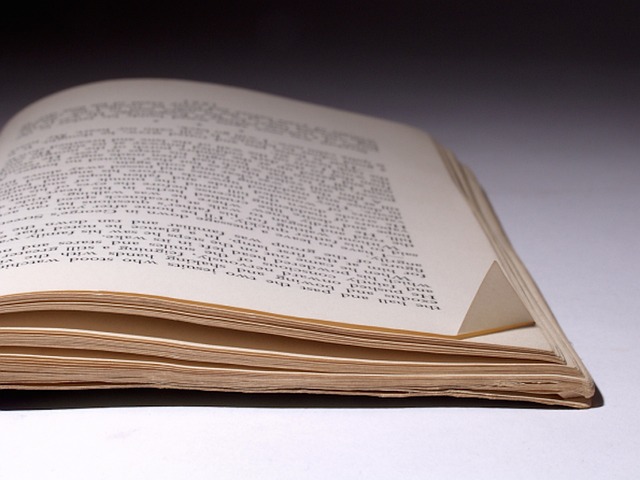Are you a writer or novelist struggling to understand the complexities of chapter length? Knowing how long each chapter should be can be pretty challenging. After all, it’s your novel—you want it to reflect your creativity and voice while meeting reader expectations regarding pacing and length.
In this blog post, we’ll offer expert writing advice on understanding page counts and tips on ensuring every chapter enhances your story!
What is the average chapter word count?
The average chapter word count in a book depends on many factors, such as the genre, the book’s overall purpose, and the author’s preference.
Generally speaking, novels have varying chapter lengths ranging from a couple hundred words to several thousand.
For fiction novels, it’s typical for chapter lengths to be between 1,000 and 3,000 words. Non-fiction chapters tend to be much longer, usually up to 8,000 words or more.
Ultimately, chapter length should depend on the needs of each particular chapter within the book. Consider breaking it into multiple chapters if a chapter is dragging on too long.
Should all chapters be the same length?
Typically, try to keep chapter lengths reasonably consistent throughout your book. If one chapter is significantly longer than the others, it may be a sign that you’re not hitting the points you need to make in as much detail as necessary. Or you may be struggling to get to the point quickly.
In contrast, if all of your chapters are short, you may not be fully exploring each critical point.
Whatever chapter length you choose, the goal should be to keep your reader engaged and provide all the information they need without feeling overwhelmed.
At the end of the day, chapter length is a highly subjective issue – what works for one book may not work for another. Never be afaid to experiment – find what works best for your writing style and genre.
How long is a first chapter?
Again, when it comes to chapter length, there is no one-size-fits-all answer.
However, the average chapter length often varies depending on the type of book you’re writing and its intended audience.
For example, a chapter in a children’s book may be only a few pages long, while a chapter in an adult novel can easily span twenty or more pages.
Even between genres, chapter lengths can vary greatly—a mystery novel might have shorter chapters than a historical fiction tale. Fast-paced thrillers often have short chapters, similar to a scene in a film, whereas slow-build emotional stories may take their time with longer chapters.
Ultimately, the best way to determine how long your first chapter should be is by reading other books in your genre and using them as guides for what readers expect from your own work.
What should a first chapter do?
The first chapter of a novel is crucial for capturing the reader’s attention and setting the tone for the rest of the book. It should introduce the main character(s) and establish the setting and time period.
The opening chapter should present the central conflict or problem that the character(s) will face throughout the book. This is best done through action, dialogue, or inner thoughts.
Thrillers often open in the midst of the originating crime that will be the subject of investigation throughout the novel. It’s not uncommon for the prologue to be a little sting of action, where the perpetrator remains anonymous. Then we’re introduced to the investigator’s world in the opening chapter.
Ultimately, the first chapter should create a sense of intrigue or curiosity that makes the reader want to keep reading – hooking the reader and setting up the story’s premise.
How do you break your story into chapters?
Breaking a novel into chapters can be challenging, but there are a few things to consider when doing so.
First, consider moving the story forward by identifying the natural breaks in the narrative. Very long chapters that meander can be challenging for a reader, so stick to the action.
While there are no hard and fast rules, move to the next chapter to represent shifts in time, changes in the setting, or transitions in the plot.
Consider pace as a driver of the book’s structure
Next, consider the pacing of the novel. Chapters can be used to control the flow of the story and create a sense of tension or release.
It’s helpful to keep in mind the reader’s experience. Chapters should be of a reasonable length, with a clear beginning, middle, and end.
Don’t be tied down by words per chapter
Never be afraid to try different, shorter chapter lengths and structures. Some novels might benefit from shorter, more frequent chapters, while others may work better with longer, more drawn-out chapters.
Ultimately, breaking a novel into individual chapters is a personal choice that will depend on the unique story and the author’s preferences.
What is the shortest chapter length in a novel?
The book with the shortest chapter is “On the Road” by Jack Kerouac. The novel is known for its unique writing style and structure, which includes short, choppy sentences and brief, stream-of-consciousness chapters.
The shortest chapter in the book, and in all literature, is Chapter 13, which is only one sentence long: “Mile 23.” Despite its brevity, this chapter is significant in the novel because it marks the halfway point of the characters’ journey and symbolizes their transition from the East to the West Coast.
Can a short story have chapters?
Yes, a short story can have chapters, but it’s uncommon.
Short stories are typically brief and compact narratives that focus on a single event or character, and they usually don’t require chapters to tell the tale.
However, creative writing is often about surprising the reader, so a short story can have chapters that are used to define a story’s structure or to break up the story into smaller, more digestible parts.
If you’re writing a short story with chapters, it’s essential to keep in mind the length and pacing of each chapter. Chapters in short stories should be relatively short and focused, with a clear beginning, middle, and end.
The chapter breaks should also serve a purpose: to create suspense, build tension, or provide a transition between scenes.
How long should a chapter be?
The book chapter in a novel can vary widely in length, depending on the author’s writing style, the book’s genre, and the story’s pacing. However, most book chapters in novels tend to be between 2,000 and 5,000 words, with some falling outside of this range.
Shorter chapters create a faster pace and a sense of urgency, while longer chapters allow for more detailed character development and world-building. It’s essential to consider the novel’s overall structure when deciding on the length of each chapter.
For example, shorter chapters may be more appropriate for action-packed sequences, while longer chapters may be better suited for moments of introspection or reflection.
Ultimately, the length of a chapter should be determined by what best serves the story and the reader’s experience. Be flexible and willing to break the rules when necessary to achieve the desired effect.
How many chapters is a standard novel?
The number of chapters in a standard novel can vary depending on the author’s writing style, the book’s genre, and the story’s length. However, most novels typically have between 10 and 50 chapters.
The length of each chapter and the book’s total word count can also affect the number of chapters. For example, a novel with shorter chapters may have more chapters overall than a novel with longer chapters.
It’s critical to note that the number of chapters in a novel is not as significant as the overall structure and pacing of the story. Each chapter should advance the plot, develop characters, or provide critical information to the reader. Always consider how each chapter of your novel serves the story and the reader’s experience rather than adhering to a strict formula or standard.
Are short chapters good?
Short chapters can be suitable for several reasons. For one, they can create a sense of urgency and keep the reader engaged by providing frequent, quick bursts of action or information.
They can also help to break up longer, more complex scenes into more digestible pieces, making the story easier to follow.
Additionally, short chapters can create a sense of momentum and help to propel the story forward, making it harder for the reader to put the book down.
However, it’s important to note that the length of a chapter should ultimately be determined by what best serves the story and the reader’s experience. While short chapters can be effective in specific contexts, longer chapters may be more appropriate in others.
Ultimately, the key is to find the right balance between pacing, detail, and engagement to create a compelling and satisfying reading experience.
How long should a chapter be?
In conclusion, the length of a chapter in a novel is not set in stone and can vary widely depending on multiple factors. While some authors may prefer shorter, more fast-paced chapters, others may opt for longer, more in-depth ones.
Ultimately, the length of a chapter should be determined by what best serves the story, the pacing of the narrative, and the reader’s experience.
As with most aspects of writing, there are no hard and fast rules regarding chapter length. The key is finding an appropriate balance between brevity and detail to create a compelling and engaging story that resonates with readers.
The key is to stay curious, stay creative, and most importantly, enjoy the process!
Harry Wallett is the Founder and Managing Director of Relay Publishing. Combining his entrepreneurial background with a love of great stories, Harry founded Relay in 2013 as a fresh way to create books and for writers to earn a living from their work. Since then, Relay has sold 3+ million copies and worked with 100s of writers on bestselling titles such as Defending Innocence, The Alveria Dragon Akademy Series and Rancher’s Family Christmas. Harry oversees the creative direction of the company, and works to develop a supportive collaborative environment for the Relay team to thrive within in order to fulfill our mission to create unputdownable books.
Relay Publishing Wants You
If you think you have what it takes to become a brilliant writer, editor, or storyliner, Relay Publishing has a range of exciting opportunities.
Find out more about us, and get in touch. We can’t wait to hear from you!


